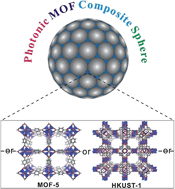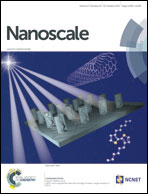Photonic metal–organic framework composite spheres: a new kind of optical material with self-reporting molecular recognition†
Abstract
Exploiting metal–organic framework (MOF) materials as novel building blocks to construct superstructures with extended and enhanced functions represents a big challenge. In biological systems, the ordering of many components is not achieved by interaction of the components with each other, but by interaction of each component with the host protein which provides a matrix to support the entire assembly. Inspired by biological systems, in this work, a general strategy for efficient spatial arrangement of MOF materials was developed by using spherical colloidal crystals as host matrices, affording a new class of highly tunable MOF composite spheres with a series of distinctive properties. It was found that the synergetic combination of the unique features of both MOF and photonic colloidal crystal imparted these hierarchically structured spheres intrinsic optical properties, specific molecular recognition with self-reporting signalling, derivatization capability, and anisotropy. More importantly, the unique photonic band-gap structure integrated in these composite spheres provides a more convenient means to manipulate the photophysical and photochemical behaviour of the trapped guest molecules in MOF nanocavities.


 Please wait while we load your content...
Please wait while we load your content...